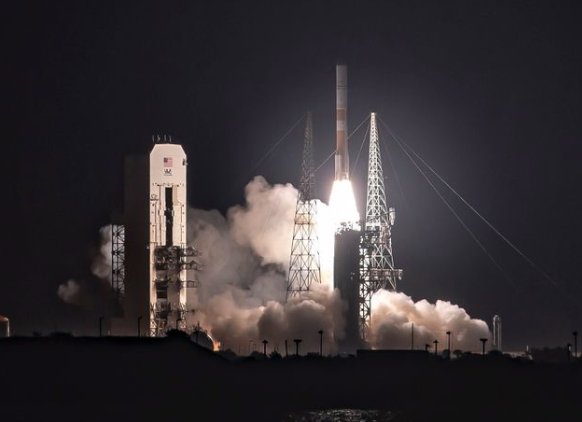
Northrop Grumman provided a wide array of innovative technologies, including four GEM-60 solid rocket motors, for ULA’s Delta IV launch of WGS-10 on March 15.

The successful launch of the WGS-10 satellite for the U.S. Air Force is the result of numerous entities' efforts.
Not the least of which is Northrop Grumman Corporation's (NYSE: NOC) contributions of a wide array of innovative technologies for the successful launch and deployment of the 10th Wideband Global SATCOM (WGS-10) on a United Launch Alliance (ULA) Delta IV rocket from Cape Canaveral Air Force Station, Florida.
“The successful Delta IV launch of the WGS-10 satellite, which is part of a larger system that provides critical communications capabilities for U.S. and allied forces worldwide, is a significant achievement for our team,” said Charlie Precourt, vice president, propulsion systems, Northrop Grumman.

Northrop Grumman's Graphite Epoxy Motor is used on United Launch Alliance’s Delta IV and Delta II launch vehicles. The 60- and 40-inch-diameter GEM motors are strap-on booster systems that can fly in different configurations depending on payload requirements with either fixed or vectorable nozzles. These motors enjoy the longest consecutive success record in commercial rocket motor history.
“This mission exemplifies the breadth of our capabilities to protect the warfighter by contributing key technologies on both the rocket and the satellite.”
For ULA’s Delta IV rocket, Northrop Grumman provided the RS-68A liquid engine nozzles, 60-inch diameter Graphite Epoxy Motors (GEM-60), 20 key lightweight composite structures ranging in size and complexity, the propellant tank for the upper stage roll control system and thermal protection material for the rocket.
Northrop Grumman’s contributions to the WGS-10 satellite includes producing loop heat pipes, standard heat pipes and payload pallet boom tubes.
Northrop Grumman facilities in Beltsville, Maryland; Clearfield, Magna and Promontory, Utah; Commerce and San Diego, California; and Iuka, Mississippi, all contributed to the effort.

